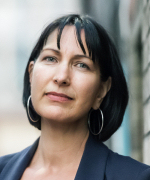
 Mia Gray and Betsy Donald argue that scholars and policymakers need to explore new regional economic growth models that focus on some of the most important issues of our time, including inequality and climate change.
Mia Gray and Betsy Donald argue that scholars and policymakers need to explore new regional economic growth models that focus on some of the most important issues of our time, including inequality and climate change.
Our society needs a real conversation about the meaning and nature of economic growth. In a time of populist politics and rising regional discontent, it is more important than ever to examine new models and approaches of sustainable, equitable and just development.
In a recent paper we explore the links between the economic crisis, growing inequality, and climate change. Like Andrew Sayer, we argue we are in a ‘double crisis’ – which is both economic and environmental. The scale, scope and nature of this double crisis, with few exceptions, has been downplayed by policymakers and more generally within mainstream economics where scholars continue to celebrate innovation and economic growth at the expense of more pressing societal issues. This promotion of constant economic growth and innovation matters because it exacerbates and legitimizes the dominant narratives of economic growth. Until we begin to disrupt this narrative, it is unlikely that we will find solutions moving forward.
We argue that we need to create new models of regional economic and environmental well-being, focusing on reducing inequality and waste. We examine wasted abudance, wasted labour, and wasted resources and think about ways we can reduce, redistribute, and renew these sources into productive assets by reworking classic examples of regional economic growth models.
Explaining crisis – economy and environment
The paper explores the scale and extent of various crises and the ways in which they interact. The first crisis we explore is the economic one: the 2007–08 financial crisis. The crisis originated in the US sub-prime mortgage market, where banks repackaged and sold this poor-quality debt to the global financial markets as high yield and low risk. Thus, when the sub-prime mortgage markets imploded, it reverberated throughout the global banking system.
Both political and economic capital was spent saving the global financial system by recapitalizing the banks and adding liquidity into the banking system. Initially, governments focused on rescuing systemically important financial institutions and re-inflating their economies (i.e., increasing the money supply through quantitative easing). Quantitative easing functioned to boost financial asset prices and stabilize the financial institutions. However, recapitalizing the banks and adding liquidity to the banking system transformed the private banking crisis into a public sovereign-debt crisis. Public debt was the disease and austerity became the prescribed cure across Europe and the US.
Understanding the impact of the financial crisis alone as part of the larger economic crisis is not enough since it is interwoven with the on-going and growing crisis in inequality. In fact, there is a renewed agenda in economics on inequality, signalled by the mainstream success of Thomas Piketty’s Capital in the Twenty-First Century, where he argues that the returns to invested wealth would always grow faster than returns to labour dependent on wages, which inexorably leads to increased inequality. In a similar manner, Wilkinson and Pickett’s work examines data that show that many social and psychological problems are correlated with higher levels of income inequality. The authors show that issues such as declining levels of trust, increasing anxiety, and excessive consumption norms are more common in countries where income inequality is higher, thus crucially arguing that inequality is a collective, not just an individual, problem. This is because inequality fuels an individual’s anxiety about where they sit in the social hierarchy and that this, in turn, fuels constant consumption.
Geographer Danny Dorling’s work has also focused on poverty, the increased concentration of wealth and, unlike many economists, the spatial unevenness of inequality. Dorling’s recent work shows that income inequality in Europe is most severe in the UK, which resembles the United States in its rates of inequality, rather than other European countries. Even though economists such as Paul Krugman and Joseph Stiglitz have continually stressed the pernicious effects of economic inequality, inequality has not featured prominently in most mainstream economists’ models, and certainly not inequality’s relationship to financial instability.
The second crisis the paper explores is the environmental one. The scientific evidence for global climate warming is unequivocal. No matter the body of data collected – whether on sea level rise, global temperature rise, warming oceans, shrinking ice sheets, declining Arctic sea ice, glacial retreat, extreme events, ocean acidification or decreased snow cover – the evidence is compelling.
Numerous environmentalists and policy institutes make the case for integrating environmental aims into economic policy. Even the World Bank seeks to inspire change around the climate crisis – noting that climate change will push 100 million people into ‘extreme poverty’ by 2030. Academics and policy-makers have grounded our understanding of climate change in the unsustainability of consumption-led models within a planet of finite resources. This highlights the fundamental link between climate change and many consumption-led models of growth.
Solutions forward
One approach forward would be to start a real conversation about the meaning and nature of economic growth and sustainability. The conventional view in economics is that we can continue to grow indefinitely because technological change will dematerialize the economy – making products smaller, or even without a material basis – and thus GDP will become increasingly decoupled from any ecological impact. However, dematerialisation does not fix the problem. Juliet Schor points out that between 1980 and 2005, while many countries’ GDP per dollar was responsible for less material flow, this has been cancelled out by the increase in GDP. Put another way, despite dematerialisation, the volume of material used globally, as well as in each individual region of the world, continues to rise.
In order to tackle the double crises, we need to bring together our ideas about austerity and inequality, environmental justice, and economic theory. We need to reconceptualize how the issues of economic and environmental degradation can be brought together in a distributional model. But it is not enough to go back to a model of post-war Keynesian redistribution as it was not focused on the environmental crisis which has accelerated since the post-war period. We need economic theories which take us away from consumption-led growth as an indicator of success. Theories which don’t shy away from addressing the distribution of wealth and work and take seriously the externalities associated with the damage to the environment.
We also need new models of successful growth. Silicon Valley has long served as a paradigmatic example of regional growth and innovation. It is the model that spawned a thousand regional and economic theories of innovation and that other regions around the world attempt to emulate, but it is also a regional site of profound contradictions – especially when viewed through the lens of the double crisis of economic distribution and climate change.
The region is a generator of inequalities the world over – in terms of hyper-debt-fuelled consumption-led material norms, globalized monopoly platform capitalism and global waste, and regional income inequality. The region now also sees drought and wildfires as the new normal in the context of a warming planet. The regional models we celebrate are important – they can either normalise waste (lives, material, and toxic) or can provide new ways to reduce, redistribute, and renew resources into productive assets. This allows us to develop new ideas around abundance, renewing the future and meaning of work, and redistributing resources for the benefit of all in our society and communities.
- This blog post first appeared at LSE’s British Politics and Policy blog and draws on the authors’ published work in Regional Studies.
- Featured image credit: Pixabay (Public, Public Domain).
Please read our comments policy before commenting
Note: This article gives the views of the author, and not the position of USAPP– American Politics and Policy, nor of the London School of Economics.
Shortened URL for this post: http://bit.ly/2BgGD1K
About the authors
 Mia Gray – Cambridge University
Mia Gray – Cambridge University
Mia Gray is Senior Lecturer at Cambridge University.
 Betsy Donald – Queen’s University
Betsy Donald – Queen’s University
Betsy Donald is Professor in Geography and Planning at Queen’s University.






